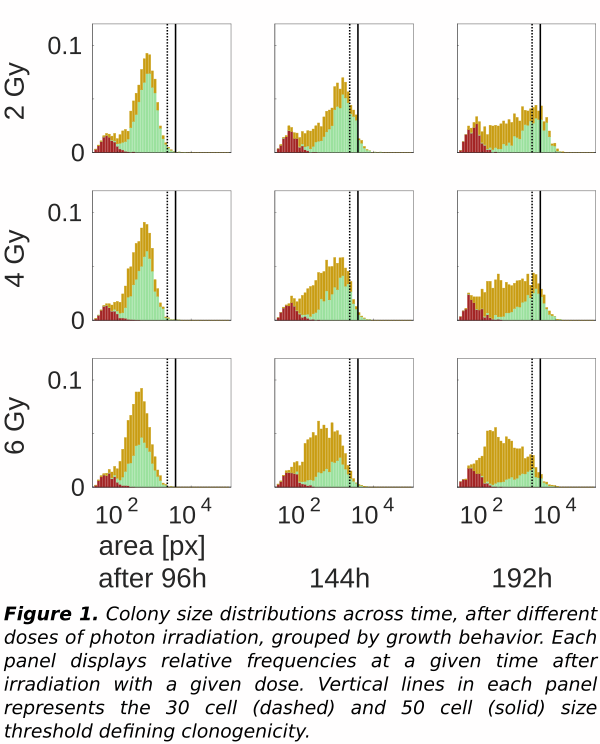Lack of robustness of in vitro clonogenic assays leads to serious uncertainty in RBE determination
MO-0142
Abstract
Lack of robustness of in vitro clonogenic assays leads to serious uncertainty in RBE determination
Authors: Robin Koch1, Emanuel Bahn2,3
1University Hospital, Department of Radiation Oncology, Heidelberg, Germany; 2Unversity Hospital, Department of Radiation Oncology, Heidelberg, Germany; 3German Cancer Research Centre (DKFZ), Clinical Cooperation Unit Radiation Oncology, Heidelberg, Germany
Show Affiliations
Hide Affiliations
Purpose or Objective
Radiobiological research relies heavily on the in vitro clonogenic assay (IVCA) to quantify cell survival and particularly RBE.
We investigated the robustness of the IVCA and if the implicit assumptions behind its rationale are fulfilled. For this aim, we studied time-course image data of growing cell colonies after photon and carbon-ion irradiation. Since clonogenicity in the IVCA is defined based on colony size at a fixed time point, we developed an analysis pipeline of colony growth behavior and size distributions.
Material and Methods
Cells from five commonly used strains (H3122, RENCA, SAT, UT-SCC-5, H460) were irradiated during exponential growth with 320kV X-rays with doses of 0‑8 Gy. In addition, H460 cells were irradiated with a spread-out Bragg peak at an LET of 100 keV/µm at the HIT beamline using doses of 0‑2 Gy. Cells were harvested directly after irradiation and seeded in T25 cell culture flasks. Microscopy images were then taken in 24 h intervals for 10 days.
Colony sizes were determined in each image by segmentation using the nnU-Net deep learning framework. Each colony was tracked over time by pairwise matching between subsequent images. Colony size distributions were acquired for each dose and time point. Colony growth curves were extracted and classified by growth behavior into exponentially growing, early abortive, and late abortive using a random-forest classifier. For exponential growth phases, growth rates were determined by fitting an exponential function to yield growth rate distributions for each dose. Cell survival curves were then calculated for different time points and different colony size thresholds to evaluate the robustness of the IVCA.
Results
Colony growth rates are normally distributed over a wide range, with standard deviations of about 80 %. They are cell type-dependent and decrease with increasing dose.
Colony sizes are similarly distributed for all cell types and both types of irradiation. At all doses and time points, they are broadly distributed over several orders of magnitude, without clear separation between live and dead colonies.
Breaking down the size distribution by growth type shows that for all doses, there are growing colonies below, and abortive colonies above the size threshold at readout time (Fig 1).

Survival rates show considerable variation with the chosen size threshold and readout time for both radiation types (Fig 2 a-c). As a result, RBE values depend strongly on the readout parameters (Fig 2 d).

Conclusion
For all investigated cell types, doses and time-points, a clear separability between live and dead colonies based on colony size is not possible. This contradicts the rationale behind the IVCA: survival scored by the colony size does not purely reflect clonogenicity, but is strongly influenced by heterogeneity and dose-dependence in growth rates. This susceptibility to the choice of readout parameters as well as cell-specific growth properties propagates into determined RBE values, possibly leading to substantial misestimation.